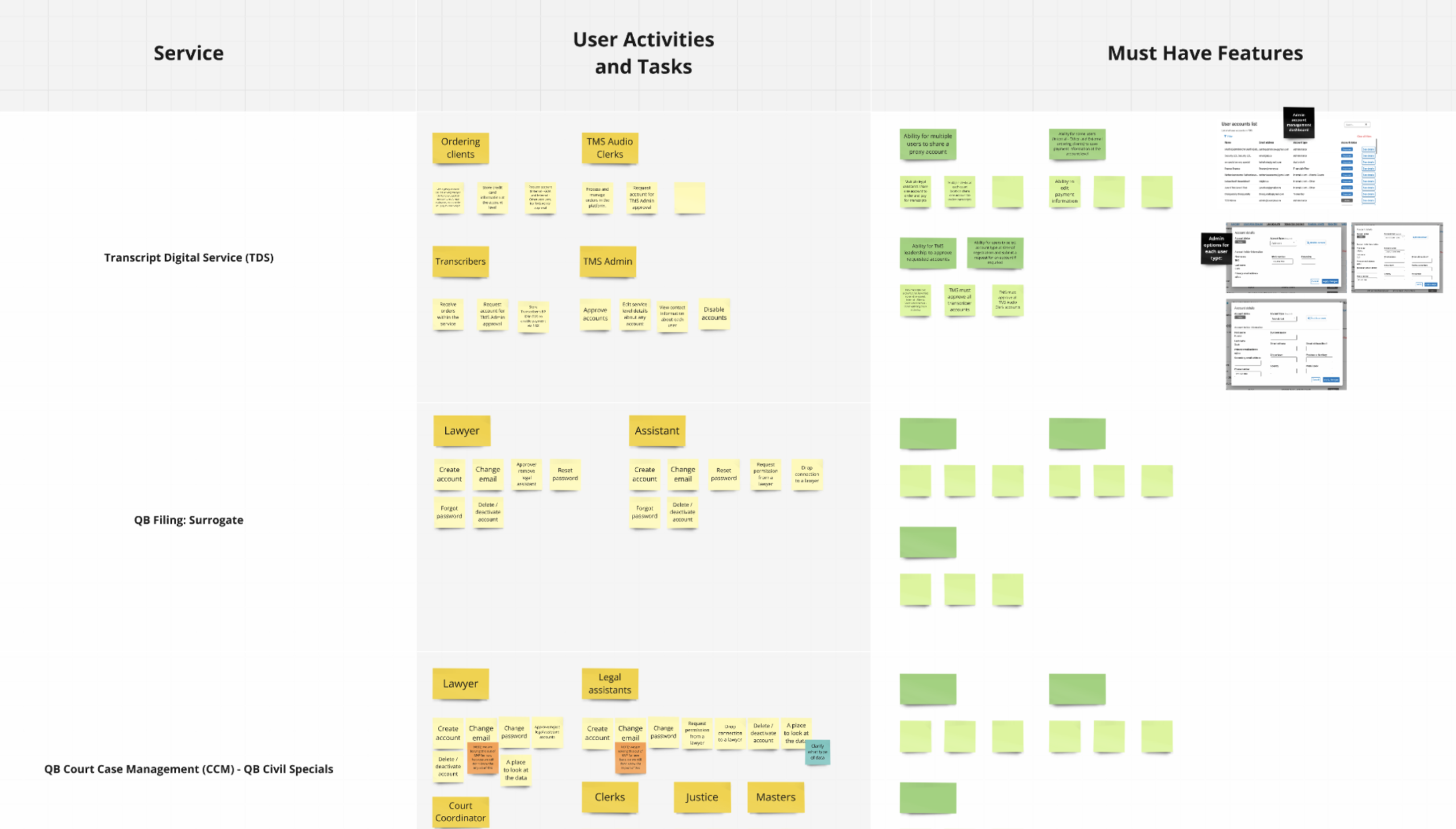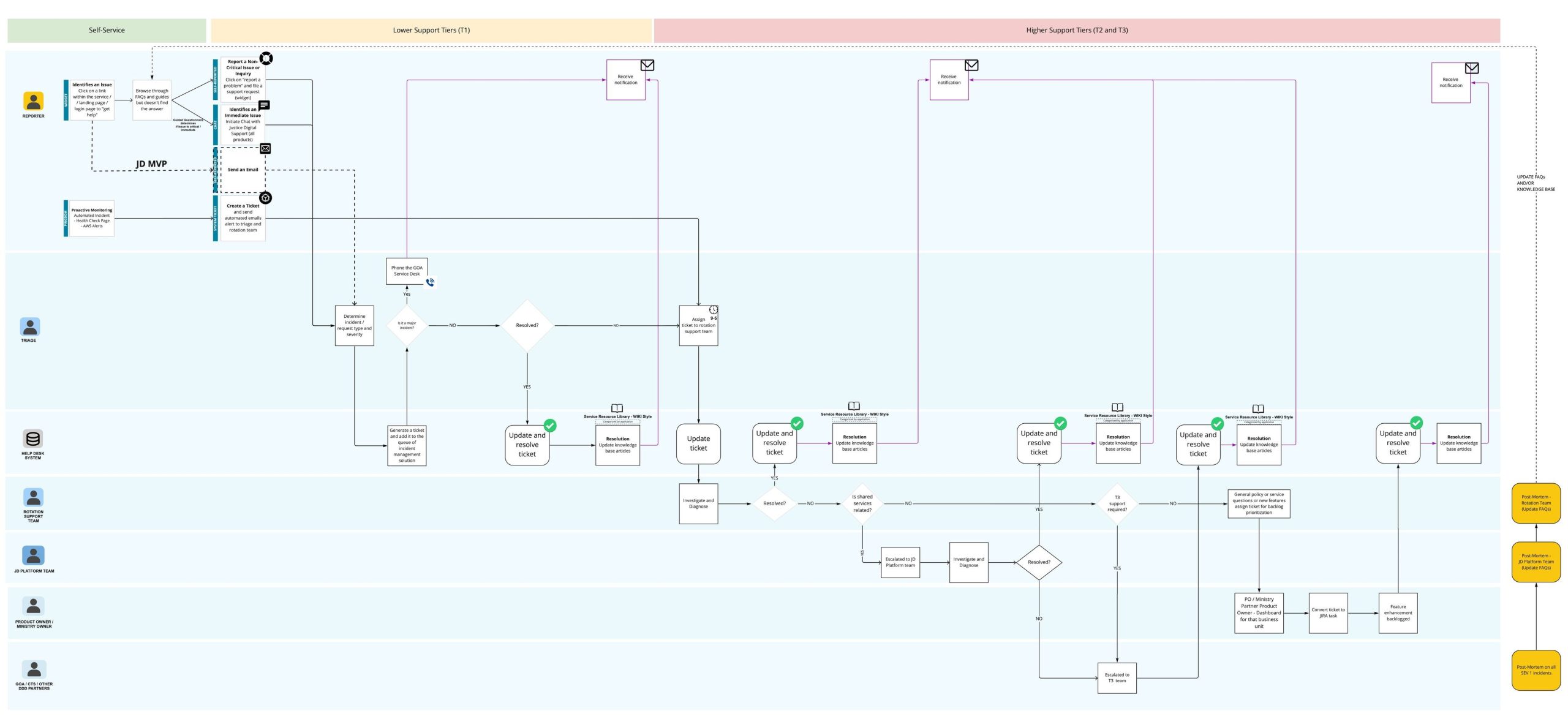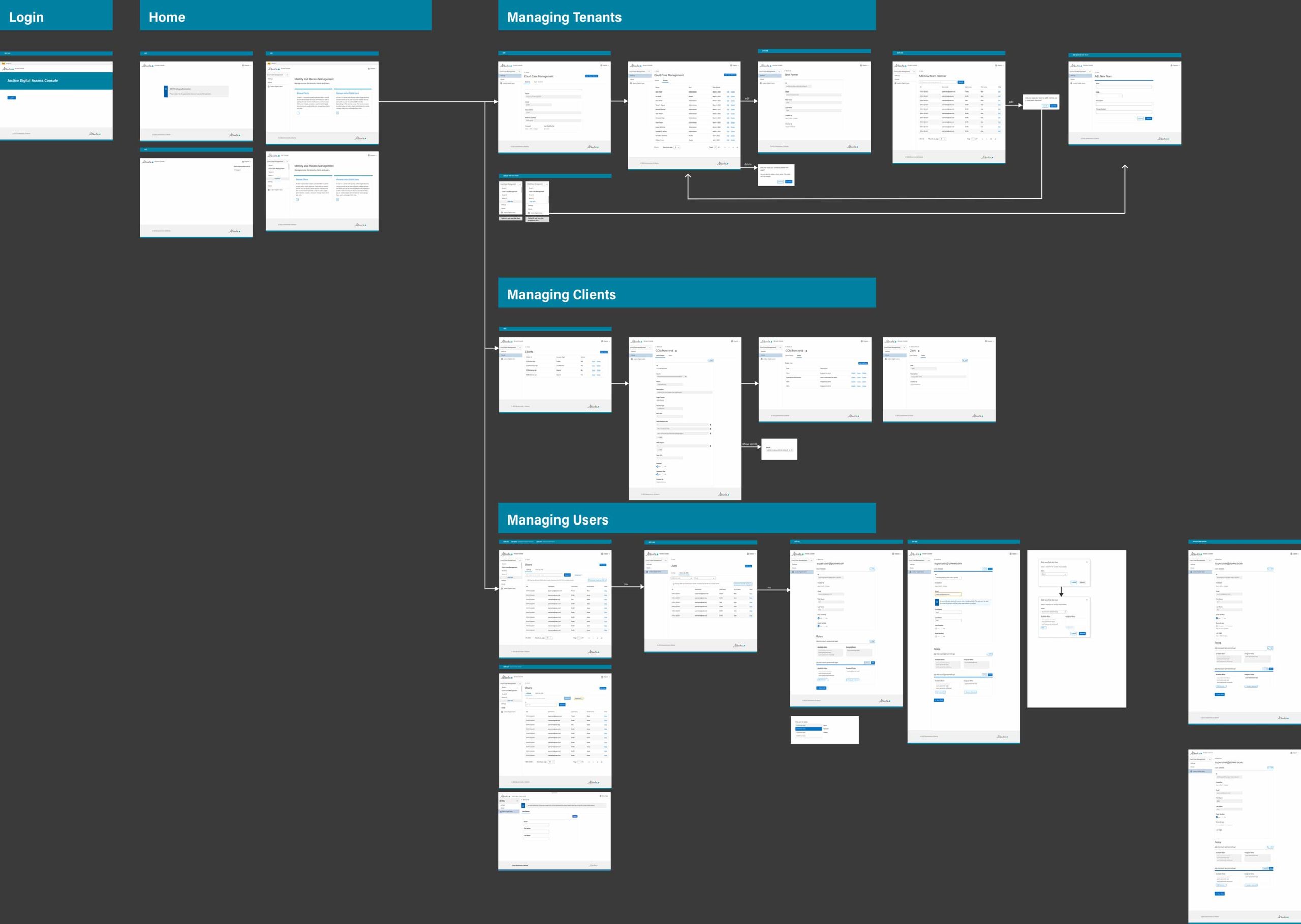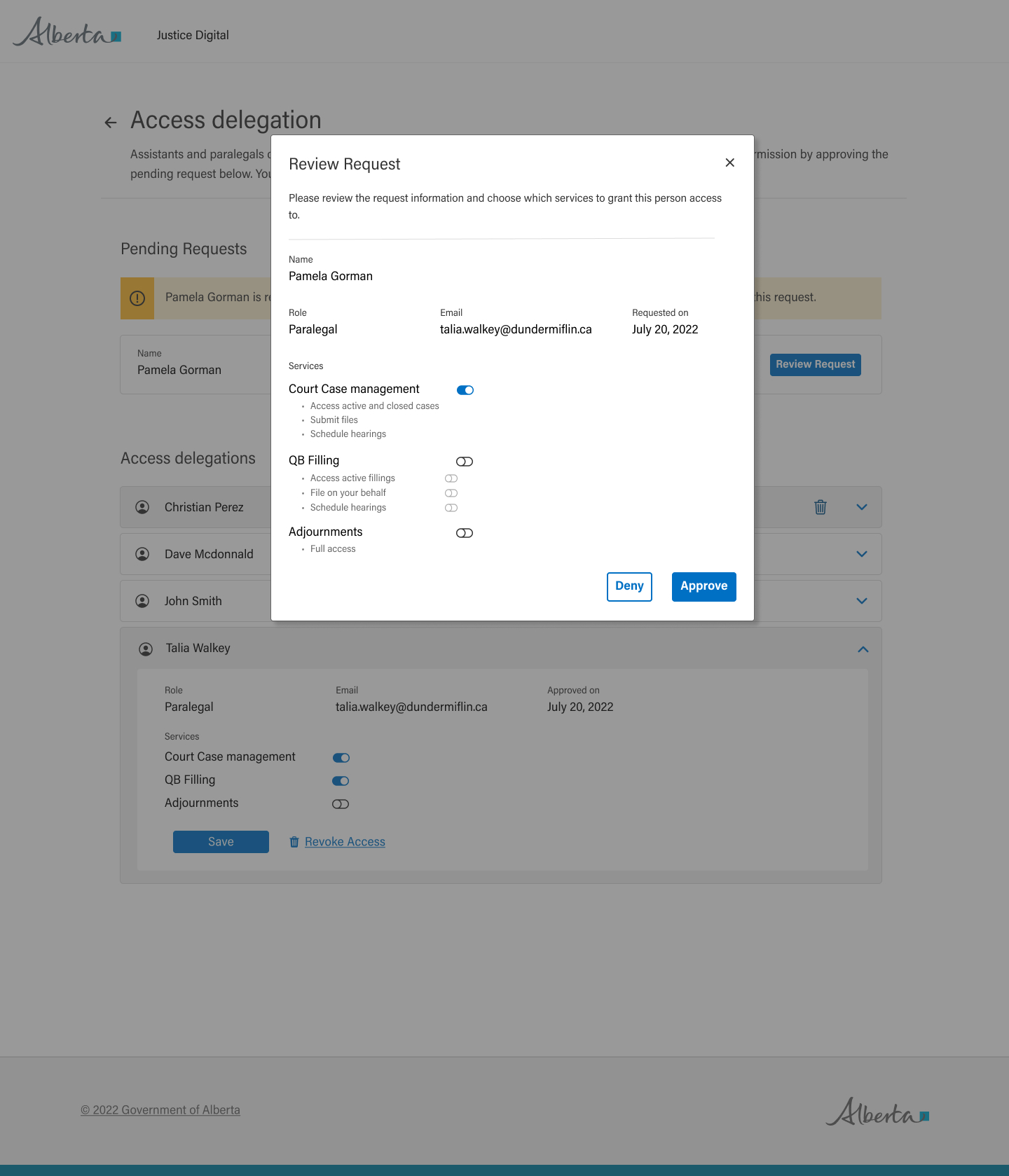The Challenge
Justice Digital needed to unify access across multiple legal services for users with different roles — such as lawyers, clerks, and self-represented litigants. Each group required tailored access without overwhelming the UI. In parallel, the department needed a scalable model to support services post-launch without active development teams.
My Role
As Service Designer, I worked closely with developers, product owners, and service teams to:
- Lead co-design workshops with internal stakeholders and external bodies like the Law Society of Alberta
- Design a dynamic role-based access model that adapts the UI based on the user’s legal role
- Use Figma + DDD Design System to prototype, test, and deliver responsive components
- Manage backlog, sprint planning, and facilitate feedback loops in a rotating Scrum Master model
- Build a Support Model MVP that triages service requests and scales across departments
Process & Deliverables
- User Journey Mapping: Visualized multi-service onboarding and delegation flows
- Component Design: Built role-specific interfaces ensuring accessibility and clarity
- Service Flow Diagrams: Defined end-to-end workflows for both identity management and support triage
- Workshop Facilitation: Led sessions to co-create solutions with stakeholders across multiple ministries



Outcome & Impact
- Consolidated multiple sign-on flows into one seamless system
- Reduced user friction through context-aware access management
- Scaled a post-launch support model used by 3+ Justice Digital teams
- Ensured full alignment with accessibility and policy requirements via the DDD Design System


“This project taught me how to design for secure, multi-role environments with high compliance needs. Bringing legal and product stakeholders into co-design sessions was key to building trust and clarity.”
